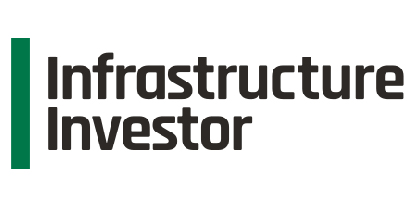Infrastructure Investor: US infra bill is ‘a big step in the right direction'

By Kalliope Gourntis, Infrastructure Investor
The US’s proposed bipartisan infrastructure legislation is not perfect, but Brent Burnett, co-head of real assets at Hamilton Lane believes it is a “net positive” for infrastructure.
“What this bill has done is to say, ‘here are the sectors the federal government is going to be involved in’,” Burnett explains. “So, from that perspective, I think this bill is a big step in the right direction because it’s starting to provide some clarity on what the role of the federal government is going to be in these infrastructure sectors.
“To me, that’s sort of the biggest net positive that comes out of this: you’re starting to get that role defined and, once private investors have clarity around what the federal government’s role is going to be, they will find a way to participate in these sectors.”
The sectors targeted by the $1 trillion Infrastructure Investment and Jobs Act run the gamut of infrastructure, including transport, digital infra, resilience and the energy grid.
According to a short paper Burnett authored the day after the Senate passed the bill, this one is “the most… comprehensive” when compared with previous plans. However, the opportunities that will emerge for private investors will vary by sub-sector.
“Rural broadband, energy transition, wastewater and resiliency sectors, those are the sectors that have good alignment across all the stakeholders that play into those projects – federal, local and state governments and potentially private participants,” says Burnett. “I think those are likely the biggest winners to come out of this.”
According to a White House fact sheet, $65 billion will be invested in broadband to “ensure every American has access to reliable high-speed internet”; the fact sheet notes that more than 30 million US citizens currently do not. Another $65 billion will go towards upgrading power infrastructure to increase the penetration rate of renewable energy, while $7.5 billion will be invested in building a national electric vehicle charging network.
Resiliency – which President Biden’s administration describes as measures to protect against cyberattacks and climate change, as well as investing in weatherproofing – will receive $50 billion. However, it is not just the federal funding from which these sectors are likely to benefit.
“In addition to these direct spending measures, there are tax incentives and regulatory approvals that will streamline new projects in those sectors,” Burnett says. “And I think any time you have a more comprehensive approach to a sector – that includes how the government is going to interact from a capital spending perspective, but also how they’re going to incentivize through tax credits, consumer subsidies as well as permitting – you have a much higher likelihood of having private capital come into those sectors.”
‘Coupon effect’
Transport, which is set to receive $269 billion in targeted spending, is expected to present few opportunities for the private sector. “The biggest component of the transportation piece is direct spending [of $110 billion] from the federal government on roads, bridges and highways,” Burnett says. “Any time you have a large, low-cost-of-capital provider come into a sector, that’s not typically a great thing for private investors. So, I think it might create some opportunities on the margins, but it’s one area where private investors may be crowded out.”
Given that the $110 billion allocated to roads and bridges is likely to fall short of the country’s needs, is it not possible that individual states will continue to partner with the private sector to deliver necessary projects?
“I think the need is a lot greater,” Burnett admits. The wait for an infrastructure bill, which stretches back to when the previous administration had presented it as a top priority, created a ‘wait and see’ approach at the state level.
“I’ve heard this described as a ‘coupon effect’, where if you’re in the market to buy something but you expect a coupon will become available in the next six months, you sit and wait until that coupon arrives in the mail. And I think there’s been some of that at the state level because there has been so much talk about this bill – which sectors it would impact and how state capital would fit in.
“Now that we have clarity at the federal level, we’ll start to see more action and activity from the states on how they will potentially fill that gap.”
Of course, the bill still has to make its way through the House of Representatives. And given that it is being held hostage by a faction of the Democratic Party, there is a risk it will get derailed.
Burnett is nevertheless optimistic the bill will become law. “It has been scaled back to really focus on the infrastructure sectors where there is a lot of bipartisan support, strong support from the public, as well as from trade bodies and labour unions. I do hope it doesn’t get derailed by some of the more extremist voices in both parties.”
